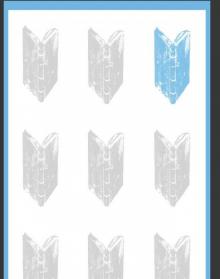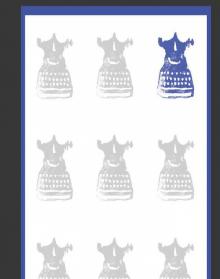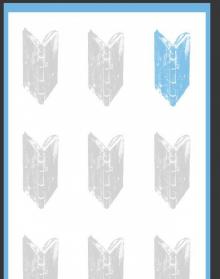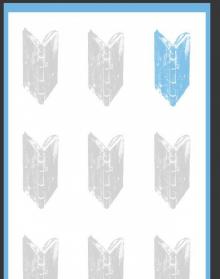- Home
- Alec Waugh
The Sugar Islands Page 3
The Sugar Islands Read online
Page 3
‘Let’s go some place and enjoy ourselves,’ they say.
As likely as not they will choose the Café Bédiat. It is lunch-time. But they do not bother about food. You can eat anywhere. You can eat in Ogden and Omaha and Buffalo. You do not come all the way to Martinique to eat.
‘Rhum, compris? Rhum, Beaucoup,’ they will tell the waitresses.
There is no nonsense about their drinking. They do not spoil good liquor with ice or lime or syrup. This isn’t bootleg gin. [The U.S.A. was in the clutches of Prohibition at this time.] They know how to treat the real stuff when they meet it. They take it straight. A port glass of neat rum in the one hand, a tumblerful of ice water as a chaser in the other, they set about the serious business of their trip. By the time the last siren of their steamer goes, half the men and three-quarters of the women are drunk. In a country where you can drink all you want for two francs and as much as you can carry for four, they toss their hundred-franc notes upon the table.
‘Ah, don’t bother about that,’ they say, as the waitress fumbles in her pocket. ‘If you can find any use for that flimsy pink stuff, you cling on to it.’
Laughing and shouting, arm in arm, they sway towards the ship, having in one small section of the globe done their country’s name more damage in four hours than her statesmen and engineers and artists can do it good in as many years. Tomorrow they will pass the day comparing ‘hang-overs’. Who are these people, what are they, where do they come from? In America itself one never sees them.
Far on the horizon the large ships pass; the liners, the tourists, and the cargoes. Nearer the shore is the little tug that plies between St. Pierre and Fort de France. It carries mail and cargo and a few passengers, stopping at Belfontain and Carbet and Case Pilote. At Carbet there is a little pier against which the tug is wharfed. But at Belfontain and Case Pilote and St. Pierre small boats row out to it. A fierce conflict is always staged about the ladder. The boat that gets its cargo and passengers discharged first will get back to the shore in time for another load. No sooner has a boat got into position beside the ladder than another boat enfilades it, creeping closer to the side of the ship; it tries to elbow it out into the sea. It is a form of aquatic spillikins: the object of the game being to displace the other boat without upsetting its passengers and cargoes into the water. The sailors shriek at each other like baseball players. It is a damp and noisy game. The last time I made such an excursion I offered our boatman double fare if he would wait till last. He shook his head. The game was greater than the reward.
Four or five times a day the little tug passes across the bay. And between it and the shore are always a number of fishing boats. For the most part in Martinique they fish with nets. The nets are long and about ten feet deep. One side of the nets is strung with cork, the other is weighted. Two canoes, rowing outwards from one another, swing the net into a circle. To bring the fish to the surface they throw stones into the circle and beat the water with their oars. Then gradually, foot by foot, they draw in the nets.
They are small fish for the greater part and most of them are sent into the market at Fort de France. From my veranda in the morning, I watch the girls coming over the hill from Fond Lahaye, carrying baskets of them upon their heads. In one of his loveliest essays Lafcadio Hearn has described the life of La Porteuse: the girl who is, in comparison with the Charbonnière, as is the race-horse to the cart-horse; who for thirty francs a month travelled her thirty miles a day, who was trained from childhood to her profession, whose speed was so fast that a good average walker could not keep pace with her for fifteen minutes. In those days all the trade of the island was in her hands. But it was forty years ago that Hearn lived under the shadow of Mont Pelé; today the truck and the lorry have taken the place very largely of La Porteuse. The big plantations have no need for her. It is only from the small estates and the fishing villages that morning after morning the young island women are sent out, their heads laden, into Fort de France. In a few years La Porteuse will have vanished. But the sight of those slim, upright, exquisitely proportioned girls moving in a smooth, fast stride under their heavy loads is still one of the most picturesque features of the island.
Now and again one or other of them pauses in the roadway below the bungalow.
‘Armantine!’ she calls out. ‘I have fish.’
We sign to her to come up, and without the least appearance of effort she climbs the long, steep flight to lay down her charge on the top step of the veranda. Usually it is a basket of small fish. And nothing is more deceptive than the small fish of the tropics. There they lie, an infinite variety of shapes and colours. In appearance not one of them is the same; but in taste they are identical. And their taste is that of dry bread that has been soaked in water. When the moon is full or waxing, however, it is the langouste that she brings. Then the entire bungalow is stirred into interest. We all gather round the veranda steps: Eldred, myself, Armantine, and Florentine. Even Belmont now and again, with a small three-months’ pig trotting at his heels. We stand in a semicircle, looking at the basket.
‘How much?’ says Eldred. ‘That, the little one.’
For here, as in Europe, the taste of the small langouste is delicate.
The girl lifts it up by its tendrils. She examines carefully its flicking tail. ‘Five francs,’ she says. We roar with laughter. ‘Five francs!’ we say. ‘We bought a far better one than that for four francs yesterday.’ The girl turns away her head and the inevitable bargaining begins. Sou by sou we approach a central figure. In the end we get the lobster for four francs fifty. The days are few on which somebody does not bring us something: breadfruit or coconut or bananas. Once there was a rabbit and once a hare.
Sometimes, sitting quietly on my veranda, I felt that in the course of a day I had seen the whole life of the island pass in front of me. Far on the horizon there are the big ships, the liners and the cargoes that maintain contact between it and the world, that bring to it the blood that feeds it: the fabric and machinery it needs; that in exchange carry away the rum and sugar that make it rich. And, closer, there is the little tug plying between St. Pierre and Fort de France, that maintains contact between the various island villages that hill and stream separate from one another. And still nearer, between the tug’s path and the shore, are the fishing boats on which rests the prosperity of those villages, and along the road there are the young girls carrying that produce to its consumer, and on my veranda there is the salesmanship and the unit of exchange.
The whole life of the island in a day.
‘I suppose,’ said Eldred at the end of our second day at Case Navire, ‘that sooner or later we shall find the snag to this.’
We never did. Day after day life followed its happy and unexacting course. No routine could have been simpler. In the tropics it is light by six. And before the tug that leaves Fort de France at daybreak had turned the headland beyond Fond Lahaye I was drinking my morning coffee. By seven I was at work. I remained there for four hours. In London, where one is surrounded by distractions, by the noises in the streets, by telephones, by the morning’s post, by one’s conversation of the previous evening, by the thought of the party one is going to that night, it is only by the most rigid seclusion that one can hope to concentrate upon one’s work. But in the tropics, where there are no distractions, where there are no telephones, no letters, no conversations to remember or look forward to, you welcome the casual interruptions of an island day. You are content enough to hear a gramophone playing behind your shoulder, to discuss in the middle of a paragraph the menu for the day’s meal and the extent of Armantine’s weekly books; to exchange gossip with Belmont and join in the friendly bargaining round the lobster basket.
At eleven I would put away my books, shave, and go to join Eldred Curwen, who would be sunbathing on the beach. It was in a very secluded, shut in and unobserved section of the beach that we bathed; so secluded that we thought bathing clothes unnecessary. It cannot, however, have been as secluded as we thought
, for one morning we found chalked upon our cabin: ‘They are bathing necked just like worms. Dirty peoples!’ We left the writing there, and one evening, a few days later, we found a studious half-caste standing in front of it turning the pages of a pocket dictionary. His face wore a puzzled look.
At half-past twelve we lunched. And with lunch the bad period in the tropical day has started. It is very hot. One’s eyes are dazzled by the glare. Most people prefer to go to bed. If you have eaten heavily and taken alcohol at lunch no power on earth can keep your eyelids open if you he out on a long chair. Most Europeans do siesta, but myself, I have never felt anything but the worse for one. [was thirty years old when I wrote this passage. The siesta is now an essential part of my day’s pattern, not only in the tropics.] You wake as you do after a heavy night. Even a shower does not put you straight. And invariably that hour or so of sleep ruins your night’s rest. Myself, I have always found that it is better to lunch lightly, to avoid alcohol till sundown, and after lunch to write letters, play chess or patience; at any rate, to choose an occupation that demands the sitting erect on a hard chair. By three o’clock the worst is over. One is ready for a walk.
I am told that it is dangerous in the tropics to take much exercise. But I have been told that so many things are dangerous in the tropics. I have been told that unless I wore coloured glasses I should get sunstroke through the eyes and that without a sun helmet, through the head. I have been told that if I ate lettuce I should get dysentery; that if I did not eat green vegetables I should catch scurvy. I was told that I should catch elephantiasis by going barefoot. I have been told that unless I wore underclothes I should catch a skin complaint called dobiage. I have been told that alcohol is poison, and that whisky is the only antidote to malaria. Each particular part of the tropics has its particular fad. The French wear sun helmets eighteen degrees north of the Equator; the English wear underclothes on the Equator. We all have our fads. Mine is, I suppose, the refusal to take a siesta after lunch. Anyhow, I have always felt better on the days when, in addition to two good swims, I have done an eight-mile walk.
And there are good walks in Martinique. Even if the roads are appalling the countryside is varied. One section of it is pasture ground. Another is laid out in sugar. There are coconut groves by Carbet. In the extreme south there is practically a desert, where you can find the prickly pear. While high on Balata, in imitation of Montmartre, there is the Sacré Cæeur of Martinique, a vast white church that you can see from half the island. There is no lack of walks in Martinique. And by the time that one is back the best hour of the day has started. The sun is low in the sky; there is no glare from the sea nor from the red stone of the veranda; the green of the hills takes on a deeper, almost an unreal, green: though really it is for that hour only during the day that you see their true colouring. When the sun is high their burnished surfaces are no more than mirrors. It is only in that last hour of daylight that you can realize the incredible deepness of their colouring.
And later, after we had bathed, after the sun had sunk, a rapid red descent into the sea, we would lie out on the veranda in deck chairs, with the violet of the sky darkening and the crickets and lizards beginning to murmur from the hills. We would not talk a great deal. We would be listening with strained ears for the sound of a Rugby’s horn. Our only means of communication with Fort de France was a car, a kind of private bus garaged in Case Navire, that carried a passenger or two each morning, ran errands in town, and in the evening brought out a load of passengers and such provisions as might have been ordered by its clients. It was on this car that we relied for our ice, for our bread, and for our butter. We never knew when the car would arrive nor how much would have been forgotten. The ice usually appeared. The bread two days in three; the butter perhaps one in four. It was like waiting for rations to arrive during the war. And till the ice had arrived, till the decanter of rum and sugar had been set out, we could not settle down to the peace of a tropic evening, than which I have found nothing in the world more lovely and serene.
Sometimes friends from Fort de France would join us. Suddenly, at about seven o’clock, there would be the hooting of a horn, the flash of lights along a drive, and up the steps a shouting of ‘We’ve brought some ice; and some new Sophie Tucker records. So we’re hoping that we’ll be welcome.’
These visits were always unexpected; such visits always are in Martinique. During our first weeks we invited people for fixed days, made preparation and kept meals back for them. But we soon learnt that in Martinique, when people say ‘We will come out on Wednesday,’ they usually mean ‘some time in the middle of the week’. So after a while we said, just vaguely, ‘Come out when you’d like a bathe.’ And sometimes they did and sometimes they didn’t. And when they did it simply meant the adding of an egg or two to the omelet or the opening of another tin. And we would bathe and chatter and play the new Sophie Tucker records and dance on the balcony in a moon-silvered dusk. But whether friends came out or not, by half-past ten the bungalow was quiet and asleep.
Into Fort de France we went as rarely as possible. For that is about the first thing that travel teaches one: that life in a town is just not possible. Of the many tropical towns that I have visited, Penang is the only one in which I should be happy to make a home. It would be surprising, indeed, if it were otherwise. The population of every tropical town is either commercial or administrative. Everyone has a definite reason for being there. There is no leisured class to create an interior world that exists for its own amusement. Since the majority of such towns are of recent growth, there are no interesting buildings, no picture galleries to be seen. In consequence, there is absolutely nothing for the unoccupied tourist to do till offices close at five o’clock and companionship is again at his disposal.
Fort de France was no exception. It is a pretty town. From the balcony of the club you look out over the green stretch of the savannah. On your left is a flanking of yellow houses; to your right the blue water of the harbour, the masts of schooners, the red funnels of cargo boats and liners. In front of you, circled by sentinel palms, is the white statue of Josephine, her face turned southwards to the Trois lies, where she was born. Fort de France is easily the prettiest town in the Leeward and Windward groups, and it was charitable of fate to divert northwards the cyclone that in the autumn of 1928 raged over the Antilles.
At Guadeloupe there was little that cannot be rebuilt. And over Guadeloupe the cyclone raged mercilessly.
‘Heaven knows how we shall get into port tomorrow,’ said the captain of the Pellerin on the eve of our arrival. ‘I don’t know what there’ll be to recognize it by.’
Yet, when we did . arrive, Pointe à Pitre seemed very little different from the picture that my memory had formed of it. I had only spent a day and a night there on my way towards Panama, but those few hours had left an ineffacable impression of dejected squalor. With its straight, puddle-spotted streets, its wooden and tin houses, garnished with slipshod balconies, it always looked as though it were about to fall to pieces. It reminded me of the kind of small town in an early Keystone comedy, that was destined every inch of it to be knocked down in the last hundred feet of film. The cyclone, instead of altering Pointe à Pitre, seemed to have put it in harmony with itself. In the same way that when you set side by side a photograph of a landscape and a modern painting of it you say of the photograph ‘That’s what it looks like’, and of the painting ‘That’s what it really is’; so, as I walked through Pointe à Pitre, remembering Pointe à Pitre as it had been sixteen months earlier, as I paused before the battered houses, the piles of masonry and iron, the spread-eagled balconies, the uprooted trees, the twisted bandstand, the unroofed and unclocked cathedral, onto whose floor, through innumerable apertures, the rain was pouring; ‘Yes’, I kept saying to myself, of this melancholy provincial town through which the business of life in market and shop and office was continuing in unaltering indolence, ‘this is how it really is.’
It was not till we got out
of Pointe à Pitre into the country that we realized what the cyclone had really meant. The effect there was extraordinary. The countryside, with its coconut palms lopped and uprooted, gave the impression of a face that has not been shaved for several days. Like a blunt razor the cyclone had passed over it. As I drove through the wrecked landscape towards Basse Terre I thanked Heaven very humbly that it had spared the green savannah, and the white statue and the palm trees guarding it; that in all its beauty and friendliness Fort de France should be waiting there untouched to welcome me.
And yet, lovely though it is, Fort de France is intolerably hot. Set in a basin of hills, its very excellencies as a harbour make it the less habitable. Not a breath of air reaches it. Everyone who can afford to, lives out of town, in the cool and quiet of the hills. Not only is Fort de France extremely hot; it is also very noisy. The streets are narrow, the cars are many. The chauffeurs drive with the recklessness, but not the skill, of Parisian taximen. When cars were introduced into Northern Siam the sense of speed was so intoxicating to the Laos that in Chiengmai artificial bumps were raised in the main streets to force the chauffeur to drive slowly. I have often wished, as I have seen disaster approaching me at every corner, that the authorities in Fort de France would take the same precautions. But it is doubtful if it would have much effect. If the roads were as bumpy as the scenic railway in San Francisco, I think the Martiniquais would continue to rush their fences, trusting blindly in the immunity of one-way streets and a hand rhythmically pressed upon a horn. All the time horns are honking. It is one’s last, it is one’s first, impression of Fort de France. Long before evening one’s head has begun to ache.

 A Spy in the Family
A Spy in the Family Love in these Days
Love in these Days The Balliols
The Balliols Kept
Kept Fuel for the Flame
Fuel for the Flame Wheels within Wheels
Wheels within Wheels The Sugar Islands
The Sugar Islands No Truce with Time
No Truce with Time My Place in the Bazaar
My Place in the Bazaar Thirteen Such Years
Thirteen Such Years The Loom of Youth
The Loom of Youth A Year to Remember
A Year to Remember A Family of Islands
A Family of Islands Brief Encounter
Brief Encounter Guy Renton
Guy Renton So Lovers Dream
So Lovers Dream His Second War
His Second War My Brother Evelyn & Other Profiles
My Brother Evelyn & Other Profiles The Mule on the Minaret
The Mule on the Minaret Sir!' She Said
Sir!' She Said Nor Many Waters
Nor Many Waters The Fatal Gift
The Fatal Gift Where the Clocks Chime Twice
Where the Clocks Chime Twice Hot Countries
Hot Countries Unclouded Summer
Unclouded Summer Island in the Sun
Island in the Sun